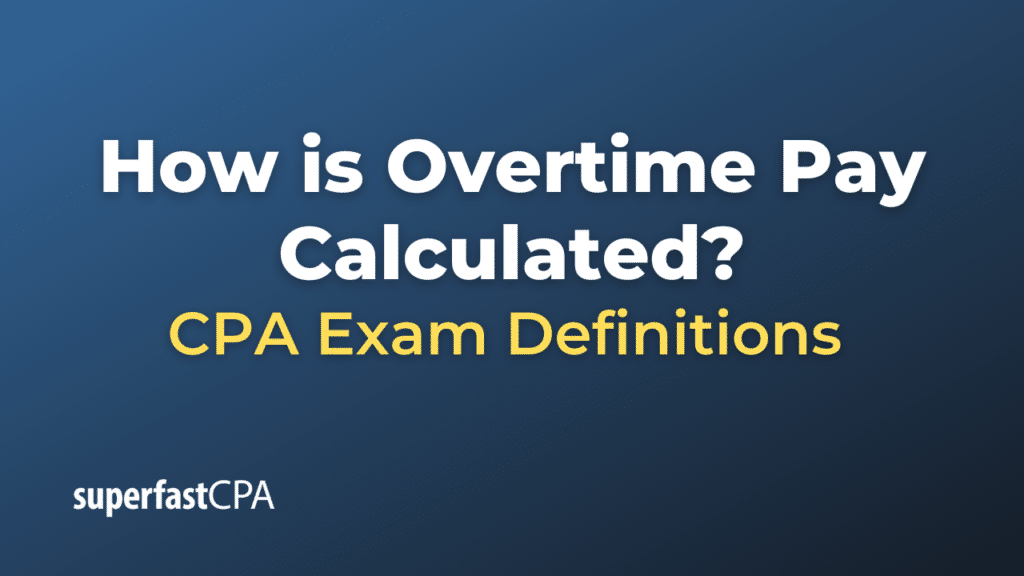How is Overtime Pay Calculated
Overtime pay is typically calculated using the following steps:
- Identify the Overtime Pay Rate: The first step in calculating overtime pay is to determine the overtime pay rate. In many jurisdictions, including the United States under the Fair Labor Standards Act (FLSA), this rate is typically “time-and-a-half,” or 1.5 times the employee’s regular hourly rate.
- Calculate the Number of Overtime Hours: This involves determining how many hours the employee worked beyond their standard workweek. For example, if the standard workweek is 40 hours and the employee worked 45 hours, the employee has 5 hours of overtime.
- Calculate Overtime Pay: Multiply the overtime pay rate by the number of overtime hours. This gives you the total amount of overtime pay for the employee for that week.
For example, let’s say an employee earns $20 per hour and works 45 hours in a week.
First, we’d identify the overtime pay rate. At time-and-a-half, the overtime rate would be $20 * 1.5 = $30 per hour.
Then, we’d calculate the number of overtime hours. In this case, it’s 45 hours (total hours worked) – 40 hours (standard workweek) = 5 hours of overtime.
Finally, we’d calculate the overtime pay. With an overtime rate of $30 and 5 hours of overtime, the employee’s overtime pay for the week would be $30 * 5 = $150.
It’s important to note that the way overtime is calculated can vary depending on local laws and regulations, the specifics of the employment contract, and the nature of the job. Some jobs, for instance, might pay double time (or 2 times the regular rate) for work on holidays or for hours worked beyond a certain threshold in a day. Other jobs, particularly salaried positions, may not offer overtime pay at all. Always check local regulations and employment contracts to ensure proper overtime pay calculation.
Example of How Overtime Pay is Calculated
Consider Sarah, who works as a nurse in a hospital. Her regular hourly wage is $25. According to her contract and the local regulations, any hours worked beyond 40 hours in a week qualify for overtime pay at a rate of 1.5 times her normal wage.
In one particular week, due to high patient demand, Sarah works 50 hours.
Here’s how we would calculate her overtime pay:
- Determine the Overtime Pay Rate: Sarah’s regular wage is $25 per hour, so her overtime pay rate would be 1.5 times that, which is $25 * 1.5 = $37.50 per hour.
- Calculate the Number of Overtime Hours: Sarah worked 50 hours in total, and 40 hours is her standard workweek, so she worked 50 hours – 40 hours = 10 hours of overtime.
- Calculate Overtime Pay: Multiply the overtime pay rate by the number of overtime hours to find the total overtime pay. So, Sarah’s overtime pay would be $37.50 (overtime pay rate) * 10 hours (overtime hours) = $375.
Remember that Sarah is also paid her regular wage for the first 40 hours of work. Therefore, her total earnings for the week would be $1,000 (from $25/hour * 40 hours) + $375 (overtime pay), equalling $1,375.
This example demonstrates the general method for calculating overtime pay, although the specifics can vary based on factors like local labor laws and the terms of employment contracts.













